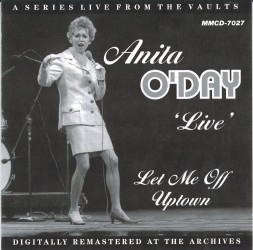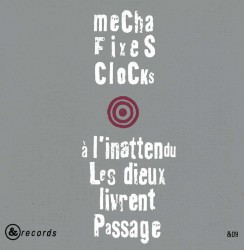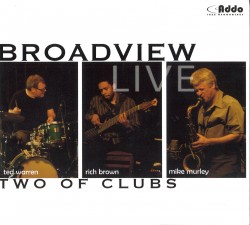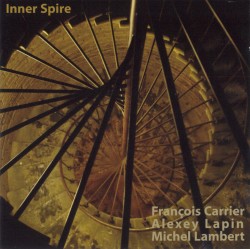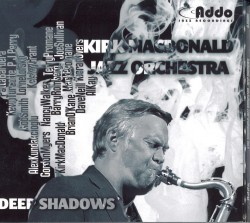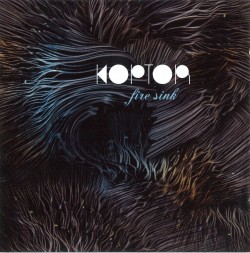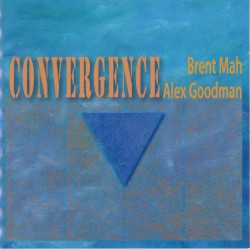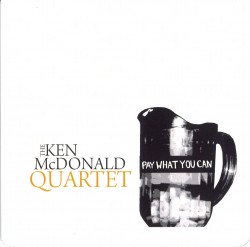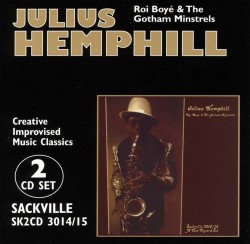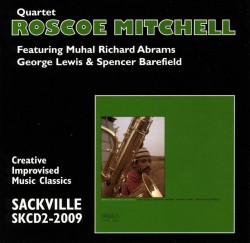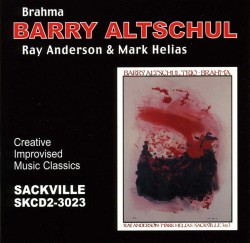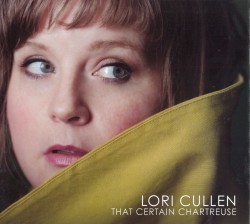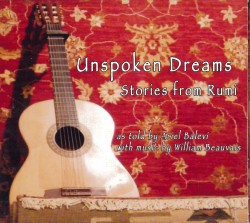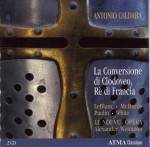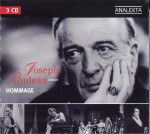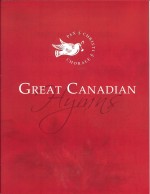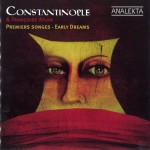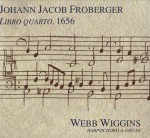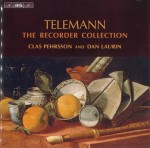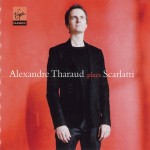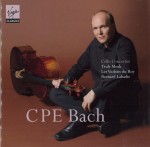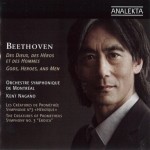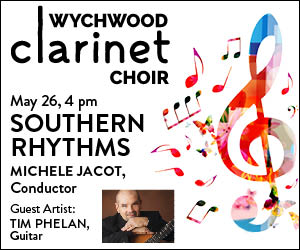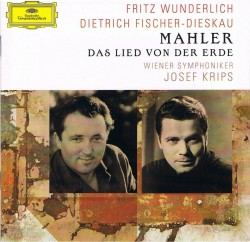 The high point of the 1964 Vienna Festival must surely have been the sold-out performance in the Musikverein Grosser Saal on June 14th of Mahler’s Das Lied von der Erde with Josef Krips conducting the Vienna Symphony Orchestra and soloists Fritz Wunderlich and Dietrich Fischer-Dieskau. The Austrian Radio’s original tape cannot be found but the copy from the Krips family archive provided the source for this unique and extraordinary performance now available on DG (4778988, mono). In addition to his fame as a superb Mozart interpreter, Josef Krips, a fine Mahlerian, had a complete intimacy with the Mahler score and directs a total performance without the swooning, heart on the sleeve emotions that inhabit many others. This attentive, stoic reality is more telling and decisive when the soloists and conductor are in complete accord. There are exquisite passages when the conductor seems to be and probably is listening to and heeding the soloist. Listeners familiar with other versions will be taken aback to hear such astonishing gravitas from both singers, especially if you know the language or are following the translations provided. In this performance, Wunderlich is more fervent than he is in the Klemperer version which was recorded in London during the same year. He is positively ardent and comprehends the texts, totally conveying their determination. Fischer-Dieskau, too, is markedly expressive in all his songs. The final song, Der Abschied, The Farewell, is a profoundly moving experience the equal of which I have not heard from Fischer-Dieskau, Kathleen Ferrier, Christa Ludwig or anyone else. Fischer-Dieskau is deeply focused on the thoughts and feelings of the poet(s) as he faces the inevitable. He is quoted as saying that of all his performances of this work, this stands out as the very finest. What a convergence of talent that was and how fortunate that the Krips tapes have been faithfully restored by the Emil Berliner Studios in Berlin generating a CD that is clear as a bell, articulate and dynamic. It matters not that is monaural.
The high point of the 1964 Vienna Festival must surely have been the sold-out performance in the Musikverein Grosser Saal on June 14th of Mahler’s Das Lied von der Erde with Josef Krips conducting the Vienna Symphony Orchestra and soloists Fritz Wunderlich and Dietrich Fischer-Dieskau. The Austrian Radio’s original tape cannot be found but the copy from the Krips family archive provided the source for this unique and extraordinary performance now available on DG (4778988, mono). In addition to his fame as a superb Mozart interpreter, Josef Krips, a fine Mahlerian, had a complete intimacy with the Mahler score and directs a total performance without the swooning, heart on the sleeve emotions that inhabit many others. This attentive, stoic reality is more telling and decisive when the soloists and conductor are in complete accord. There are exquisite passages when the conductor seems to be and probably is listening to and heeding the soloist. Listeners familiar with other versions will be taken aback to hear such astonishing gravitas from both singers, especially if you know the language or are following the translations provided. In this performance, Wunderlich is more fervent than he is in the Klemperer version which was recorded in London during the same year. He is positively ardent and comprehends the texts, totally conveying their determination. Fischer-Dieskau, too, is markedly expressive in all his songs. The final song, Der Abschied, The Farewell, is a profoundly moving experience the equal of which I have not heard from Fischer-Dieskau, Kathleen Ferrier, Christa Ludwig or anyone else. Fischer-Dieskau is deeply focused on the thoughts and feelings of the poet(s) as he faces the inevitable. He is quoted as saying that of all his performances of this work, this stands out as the very finest. What a convergence of talent that was and how fortunate that the Krips tapes have been faithfully restored by the Emil Berliner Studios in Berlin generating a CD that is clear as a bell, articulate and dynamic. It matters not that is monaural.
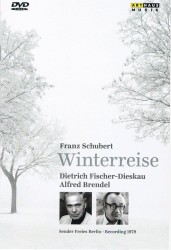 ARTHAUS has released a Winterreise sung by Fischer-Dieskau with Alfred Brendel live in Siemensvilla, Berlin in 1979 (DVD 107229). Even though pianist and singer have each performed and recorded this cycle many times, both together and with others, this studio production, without an audience, is very special. Their combined insights, eagerly shared between the two as seen in the 56 minute rehearsal sequences, produce a memorable experience.
ARTHAUS has released a Winterreise sung by Fischer-Dieskau with Alfred Brendel live in Siemensvilla, Berlin in 1979 (DVD 107229). Even though pianist and singer have each performed and recorded this cycle many times, both together and with others, this studio production, without an audience, is very special. Their combined insights, eagerly shared between the two as seen in the 56 minute rehearsal sequences, produce a memorable experience.
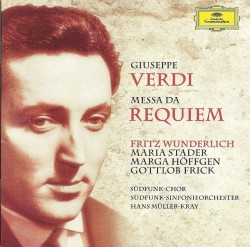 A reminder of the superlative, must-have Verdi Requiem recorded live in the Liederhalle, Stuttgart on November 2, 1960 with Hans Mulley-Kray conducting the SWR Radio Symphony Orchestra, The Stuttgart Bach Choir, The Stuttgart Singing Teachers’ Association Choir, with Maria Stader, Elizabeth Hoffgen, Fritz Wunderlich, and Gottlob Frick (DG 476638, 2CDs). The performance is uniquely communicative, being more a requiem mass than an operatic outing. Try your local classical specialist or get it from Amazon.de.
A reminder of the superlative, must-have Verdi Requiem recorded live in the Liederhalle, Stuttgart on November 2, 1960 with Hans Mulley-Kray conducting the SWR Radio Symphony Orchestra, The Stuttgart Bach Choir, The Stuttgart Singing Teachers’ Association Choir, with Maria Stader, Elizabeth Hoffgen, Fritz Wunderlich, and Gottlob Frick (DG 476638, 2CDs). The performance is uniquely communicative, being more a requiem mass than an operatic outing. Try your local classical specialist or get it from Amazon.de.
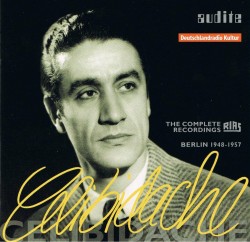 The Romanian conductor Sergiu Celibidache made but a few recordings in the late 1940s and early 1950s at which time he was regarded as something of a firebrand. In 1946, awaiting the return of the banned Furtwangler, he was elected to the post of acting chief conductor of the Berlin Philharmonic, then an orchestra in disrepair, remaining in that position until 1954. He hoped to follow Furtwangler as chief conductor but Karajan won out and was appointed to the position for life. Celibidache moved on, now refusing to record, believing, rightly so, that no one performance can ever contain a performer’s definitive view of the work. He did, however “authorize” some videos for general distribution. Only after his death were many live performances issued on CD. However, he was not the same quixotic conductor of the forties and fifties. AUDITE has a set of all the Celibidache performances recorded by the RIAS, Berlin between 1948 and 1957 (AUDITE 21.406, 3CDs). The orchestras are the Berlin Philharmonic (BPO) and the RIAS Symphony (RIAS) and the repertoire is quite unusual. There is a Rhapsody in Blue (RIAS) from 1948 with Gerhard Puchelt, piano, that is totally unidiomatic... played in the manner of a nebulous English movie soundtrack. The conductor went on to be an ardent fan of Gershwin’s music. Ravel’s Rapsodie Espagnole (BPO) from 1948 is interesting but clearly a non-French performance. Four performances from 1949 with the BPO are a perfect fit: Busoni’s Violin Concerto, Op.35 with Siegfried Borries; Cherubini’s Anacreon Overture and Hindemith’s 1945 Piano Concerto again with Puchelt. Also there is the world premier of Reinhard Schwarz-Schilling’s Introduction and Fugue for String Orchestra. Harold Genzmer’s 1944 Flute Concerto with Gustav Scheck (BPO) from 1950 is followed by a surprise! A fine reading of Copland’s Appalachian Spring with the BPO. Finally, three works by Heinz Tiessen (1887-1971), the conductor’s former teacher, recorded live on October 7, 1957 with the Radio Symphony Orchestra, Berlin. Heard are The Hamlet Suite, Op.30, The Salambo Suite, Op.34a and the Symphony No.2 Op.7. Some of the pieces in this collection may be new to collectors but are well worth investigating, particularly the Tiessen works. The sound throughout runs from good to very good.
The Romanian conductor Sergiu Celibidache made but a few recordings in the late 1940s and early 1950s at which time he was regarded as something of a firebrand. In 1946, awaiting the return of the banned Furtwangler, he was elected to the post of acting chief conductor of the Berlin Philharmonic, then an orchestra in disrepair, remaining in that position until 1954. He hoped to follow Furtwangler as chief conductor but Karajan won out and was appointed to the position for life. Celibidache moved on, now refusing to record, believing, rightly so, that no one performance can ever contain a performer’s definitive view of the work. He did, however “authorize” some videos for general distribution. Only after his death were many live performances issued on CD. However, he was not the same quixotic conductor of the forties and fifties. AUDITE has a set of all the Celibidache performances recorded by the RIAS, Berlin between 1948 and 1957 (AUDITE 21.406, 3CDs). The orchestras are the Berlin Philharmonic (BPO) and the RIAS Symphony (RIAS) and the repertoire is quite unusual. There is a Rhapsody in Blue (RIAS) from 1948 with Gerhard Puchelt, piano, that is totally unidiomatic... played in the manner of a nebulous English movie soundtrack. The conductor went on to be an ardent fan of Gershwin’s music. Ravel’s Rapsodie Espagnole (BPO) from 1948 is interesting but clearly a non-French performance. Four performances from 1949 with the BPO are a perfect fit: Busoni’s Violin Concerto, Op.35 with Siegfried Borries; Cherubini’s Anacreon Overture and Hindemith’s 1945 Piano Concerto again with Puchelt. Also there is the world premier of Reinhard Schwarz-Schilling’s Introduction and Fugue for String Orchestra. Harold Genzmer’s 1944 Flute Concerto with Gustav Scheck (BPO) from 1950 is followed by a surprise! A fine reading of Copland’s Appalachian Spring with the BPO. Finally, three works by Heinz Tiessen (1887-1971), the conductor’s former teacher, recorded live on October 7, 1957 with the Radio Symphony Orchestra, Berlin. Heard are The Hamlet Suite, Op.30, The Salambo Suite, Op.34a and the Symphony No.2 Op.7. Some of the pieces in this collection may be new to collectors but are well worth investigating, particularly the Tiessen works. The sound throughout runs from good to very good.
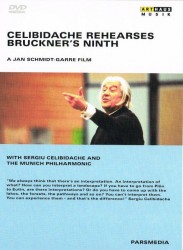 I do enjoy some rehearsal videos and often find them very absorbing and informative. I can enthusiastically recommend a new DVD, Celibidache Rehearses Bruckner’s Ninth (ARTHAUS MUSIC 101555, 1 CD). In his late years the conductor took the time to perfect minute details of balance and tempo. “I breathe with you, and that is the secret of phrasing: where you breathe and how you breathe.” This video is only of the Adagio movement and is interlaced with Celibidache’s appreciation of Bruckner the composer and visionary. Profoundly satisfying, this should not be missed by a thoughtful person who gets Bruckner.
I do enjoy some rehearsal videos and often find them very absorbing and informative. I can enthusiastically recommend a new DVD, Celibidache Rehearses Bruckner’s Ninth (ARTHAUS MUSIC 101555, 1 CD). In his late years the conductor took the time to perfect minute details of balance and tempo. “I breathe with you, and that is the secret of phrasing: where you breathe and how you breathe.” This video is only of the Adagio movement and is interlaced with Celibidache’s appreciation of Bruckner the composer and visionary. Profoundly satisfying, this should not be missed by a thoughtful person who gets Bruckner.
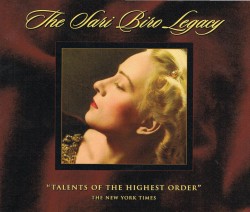 Sari Biro, born in Budapest in 1912 was an exceptional pianist whose talent was recognized from the age of four when she would play from memory pieces that her older sister had performed. She won a scholarship to the legendary Franz Liszt Academy. Composer Vincent D’Indy said that “To hear Sari play makes one a better human being.” Biro left Hungary in 1939 and arrived in New York with her concert gowns and sheet music and very little money. It was on 4 May, 1941 that she made her New York debut and the critics fell over themselves heaping praise on her playing. The New York Times: “Sari Biro plays the piano as well as she looks, which is saying a lot.” The New York World Telegram: “Definitely belonging in the front group of the contemporary pianists, male or female.” She concertized from coast to coast, also South America, Mexico, Cuba, and Puerto Rico, always generating rave reviews for her playing, her consummate artistry and sensitivity. She was heard from coast to coast on the NBC radio network, appeared on many television programs and in 1958 she presented 13 live programs on KQED, San Francisco’s Public television station. She was not a stranger to radio or television for about the next two decades. After 1974, she retired from the concert platform but continued to conduct master classes until 1990, the year of her death. Listening to a recent set from Cambria Recordings (CD 1174, 4 CDs) gives the listener a pretty fair idea of her varied and enormous repertoire, from Bach to Scarlatti, Rameau, Kodaly, Milhaud, Beethoven, Bartok, Kabalevsky, Mussorgsky, Mozart, Prokofiev, Gershwin... two dozen composers in all. Her playing has intimacy. Her textures are transparent. Where appropriate, her touch is remarkably non percussive but with full dynamics. She embraces and adapts to the various styles with apparent ease: for example listen to her Bach and immediately play a 20th century opus and you may find it hard to believe it is the same pianist. But you will certain that that pianist is an astounding interpreter of whatever she plays. The CDs in this omnibus collection are derived from Remington Records LPs and from recitals. Considering the dates and circumstances under which these were made it is somewhat surprising that the sound is free of any artifacts and is consistently excellent without reservation. This set has a holy mission to bring back a once important, extraordinary and superb musician who otherwise has slipped out of memory. I am pleased to note that Cambria has done it most successfully.
Sari Biro, born in Budapest in 1912 was an exceptional pianist whose talent was recognized from the age of four when she would play from memory pieces that her older sister had performed. She won a scholarship to the legendary Franz Liszt Academy. Composer Vincent D’Indy said that “To hear Sari play makes one a better human being.” Biro left Hungary in 1939 and arrived in New York with her concert gowns and sheet music and very little money. It was on 4 May, 1941 that she made her New York debut and the critics fell over themselves heaping praise on her playing. The New York Times: “Sari Biro plays the piano as well as she looks, which is saying a lot.” The New York World Telegram: “Definitely belonging in the front group of the contemporary pianists, male or female.” She concertized from coast to coast, also South America, Mexico, Cuba, and Puerto Rico, always generating rave reviews for her playing, her consummate artistry and sensitivity. She was heard from coast to coast on the NBC radio network, appeared on many television programs and in 1958 she presented 13 live programs on KQED, San Francisco’s Public television station. She was not a stranger to radio or television for about the next two decades. After 1974, she retired from the concert platform but continued to conduct master classes until 1990, the year of her death. Listening to a recent set from Cambria Recordings (CD 1174, 4 CDs) gives the listener a pretty fair idea of her varied and enormous repertoire, from Bach to Scarlatti, Rameau, Kodaly, Milhaud, Beethoven, Bartok, Kabalevsky, Mussorgsky, Mozart, Prokofiev, Gershwin... two dozen composers in all. Her playing has intimacy. Her textures are transparent. Where appropriate, her touch is remarkably non percussive but with full dynamics. She embraces and adapts to the various styles with apparent ease: for example listen to her Bach and immediately play a 20th century opus and you may find it hard to believe it is the same pianist. But you will certain that that pianist is an astounding interpreter of whatever she plays. The CDs in this omnibus collection are derived from Remington Records LPs and from recitals. Considering the dates and circumstances under which these were made it is somewhat surprising that the sound is free of any artifacts and is consistently excellent without reservation. This set has a holy mission to bring back a once important, extraordinary and superb musician who otherwise has slipped out of memory. I am pleased to note that Cambria has done it most successfully.
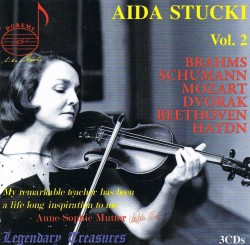 Since the release of Volume 1 of Aida Stucki in May 2009 we have awaited Volume 2. At last it’s here and the repertoire is mixed: Brahms, Schumann, Haydn, Mozart, Beethoven and Dvorak (DOREMI DHR-8006-8, 3 CDs). Volume 1 (DHR-7964-9, 6 CDs) was all Mozart, concertos and sonatas, and Stucki demonstrated her close affinity with the composer with interpretations that are second to none including Grumiaux and her own student, Anne Sophie Mutter. Incidentally, that set won, most deservedly, the 2010 Preis der Deutschen Schallplatten German Critics Award. The new set opens with the three violin sonatas by Brahms in which she is accompanied by Walter Frey from a live broadcast from Zurich in 1972. These are the most musically engaging performances and the purest violin sound imaginable... the kind that you want to immediately play again. Also heard are Brahms Second String Quartet and the complete F.A.E Sonata both of them live and inspired... as are all but one work, the Schumann Fantasie for violin and orchestra, op.131 which is from a Vox disc of 1971. Along with works by the other composers this set is of unquestioned merit.
Since the release of Volume 1 of Aida Stucki in May 2009 we have awaited Volume 2. At last it’s here and the repertoire is mixed: Brahms, Schumann, Haydn, Mozart, Beethoven and Dvorak (DOREMI DHR-8006-8, 3 CDs). Volume 1 (DHR-7964-9, 6 CDs) was all Mozart, concertos and sonatas, and Stucki demonstrated her close affinity with the composer with interpretations that are second to none including Grumiaux and her own student, Anne Sophie Mutter. Incidentally, that set won, most deservedly, the 2010 Preis der Deutschen Schallplatten German Critics Award. The new set opens with the three violin sonatas by Brahms in which she is accompanied by Walter Frey from a live broadcast from Zurich in 1972. These are the most musically engaging performances and the purest violin sound imaginable... the kind that you want to immediately play again. Also heard are Brahms Second String Quartet and the complete F.A.E Sonata both of them live and inspired... as are all but one work, the Schumann Fantasie for violin and orchestra, op.131 which is from a Vox disc of 1971. Along with works by the other composers this set is of unquestioned merit.
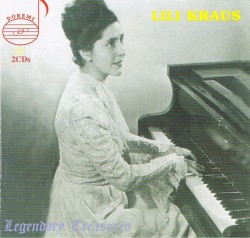 Lili Kraus, one of the most respected pianists of the 20th century was a distinguished interpreter of the classics... Mozart, Beethoven and Schubert. She was, however, best known for her recordings of the Mozart concertos and sonatas, including the violin sonatas. Her 1935-1937 recordings of the violin sonatas with Szymon Goldberg gained her a top place among classical performers. In 1954-1957 she re-recorded them with violinist Willi Boskovsky who is also the conductor on a new set from DOREMI which includes Mozart’s Piano Concertos nos.9 and 20 (DHR-7929/30, 2 CDs). These concertos date from early 1950’s derived from LPs made by the Discophiles Français and this is their first appearance on CD. They are, in my opinion, superior to her later recordings, the piano moving forward gracefully in a pure Mozart style and yet laced with refreshing expression. Also from Discophiles Français are three monumental chamber works, the Clarinet Trio K498, the Piano and Winds Quintet, K452 (which at the time Mozart considered to be his best work) and the charming Adagio and Rondo for Glass Harmonica K607. Kraus was contracted to record all the Mozart piano works for DF but the company ceased operations in 1955. A pleasant surprise is a set of Bach works. Whereas she is known for her Mozart recordings on various major labels, her Bach recordings were made for a small American company, EDUCO, as educational tools for teachers and intermediate students. She plays 22 familiar keyboard miniatures, Minuets, Polonaises and Preludes and the like, pieces usually heard from students. Each piece is a perfect gem, beautifully articulated and stylistically faultless. What a pleasure they are. Kraus made several EDUCO LPs and perhaps they will be transferred, too.
Lili Kraus, one of the most respected pianists of the 20th century was a distinguished interpreter of the classics... Mozart, Beethoven and Schubert. She was, however, best known for her recordings of the Mozart concertos and sonatas, including the violin sonatas. Her 1935-1937 recordings of the violin sonatas with Szymon Goldberg gained her a top place among classical performers. In 1954-1957 she re-recorded them with violinist Willi Boskovsky who is also the conductor on a new set from DOREMI which includes Mozart’s Piano Concertos nos.9 and 20 (DHR-7929/30, 2 CDs). These concertos date from early 1950’s derived from LPs made by the Discophiles Français and this is their first appearance on CD. They are, in my opinion, superior to her later recordings, the piano moving forward gracefully in a pure Mozart style and yet laced with refreshing expression. Also from Discophiles Français are three monumental chamber works, the Clarinet Trio K498, the Piano and Winds Quintet, K452 (which at the time Mozart considered to be his best work) and the charming Adagio and Rondo for Glass Harmonica K607. Kraus was contracted to record all the Mozart piano works for DF but the company ceased operations in 1955. A pleasant surprise is a set of Bach works. Whereas she is known for her Mozart recordings on various major labels, her Bach recordings were made for a small American company, EDUCO, as educational tools for teachers and intermediate students. She plays 22 familiar keyboard miniatures, Minuets, Polonaises and Preludes and the like, pieces usually heard from students. Each piece is a perfect gem, beautifully articulated and stylistically faultless. What a pleasure they are. Kraus made several EDUCO LPs and perhaps they will be transferred, too.


